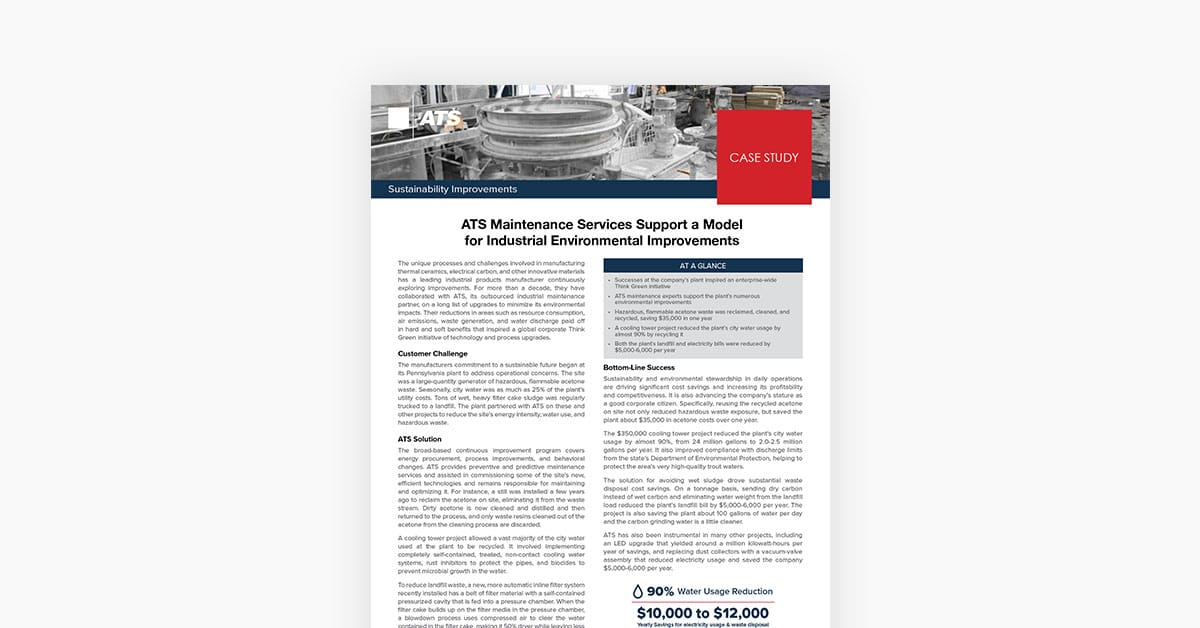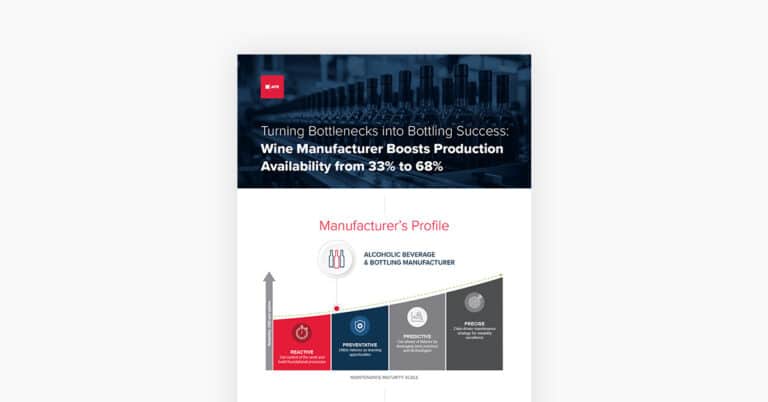The unique processes and challenges involved in manufacturing thermal ceramics, electrical carbon, and other innovative materials has a leading industrial products manufacturer continuously exploring improvements. For more than a decade, they have collaborated with ATS, its outsourced industrial maintenance partner, on a long list of upgrades to minimize its environmental impacts. Their reductions in areas such as resource consumption, air emissions, waste generation, and water discharge paid off in hard and soft benefits that inspired a global corporate Think Green initiative of technology and process upgrades.
Challenges
The manufacturers commitment to a sustainable future began at its Pennsylvania plant to address operational concerns. The site was a large-quantity generator of hazardous, flammable acetone waste. Seasonally, city water was as much as 25% of the plant’s utility costs. Tons of wet, heavy filter cake sludge was regularly trucked to a landfill. The plant partnered with ATS on these and other projects to reduce the site’s energy intensity, water use, and hazardous waste.
Solution
The broad-based continuous improvement program covers energy procurement, process improvements, and behavioral changes. ATS provides preventive and predictive maintenance services and assisted in commissioning some of the site’s new, efficient technologies and remains responsible for maintaining and optimizing it. For instance, a still was installed a few years ago to reclaim the acetone on site, eliminating it from the waste stream. Dirty acetone is now cleaned and distilled and then returned to the process, and only waste resins cleaned out of the acetone from the cleaning process are discarded.
A cooling tower project allowed a vast majority of the city water used at the plant to be recycled. It involved implementing completely self-contained, treated, non-contact cooling water systems, rust inhibitors to protect the pipes, and biocides to prevent microbial growth in the water.
To reduce landfill waste, a new, more automatic inline filter system recently installed has a belt of filter material with a self-contained pressurized cavity that is fed into a pressure chamber. When the filter cake builds up on the filter media in the pressure chamber, a blowdown process uses compressed air to clear the water contained in the filter cake, making it 50% dryer while leaving less weight in the hopper and recapturing water from the process.
Results
Sustainability and environmental stewardship in daily operations are driving significant cost savings and increasing its profitability and competitiveness. It is also advancing the company’s stature as a good corporate citizen. Specifically, reusing the recycled acetone on site not only reduced hazardous waste exposure, but saved the plant about $35,000 in acetone costs over one year.
The $350,000 cooling tower project reduced the plant’s city water usage by almost 90%, from 24 million gallons to 2.0-2.5 million gallons per year. It also improved compliance with discharge limits from the state’s Department of Environmental Protection, helping to protect the area’s very high-quality trout waters.
The solution for avoiding wet sludge drove substantial waste disposal cost savings. On a tonnage basis, sending dry carbon instead of wet carbon and eliminating water weight from the landfill load reduced the plant’s landfill bill by $5,000-6,000 per year. The project is also saving the plant about 100 gallons of water per day and the carbon grinding water is a little cleaner.
ATS has also been instrumental in many other projects, including an LED upgrade that yielded around a million kilowatt-hours per year of savings, and replacing dust collectors with a vacuum-valve assembly that reduced electricity usage and saved the company $5,000-6,000 per year.


